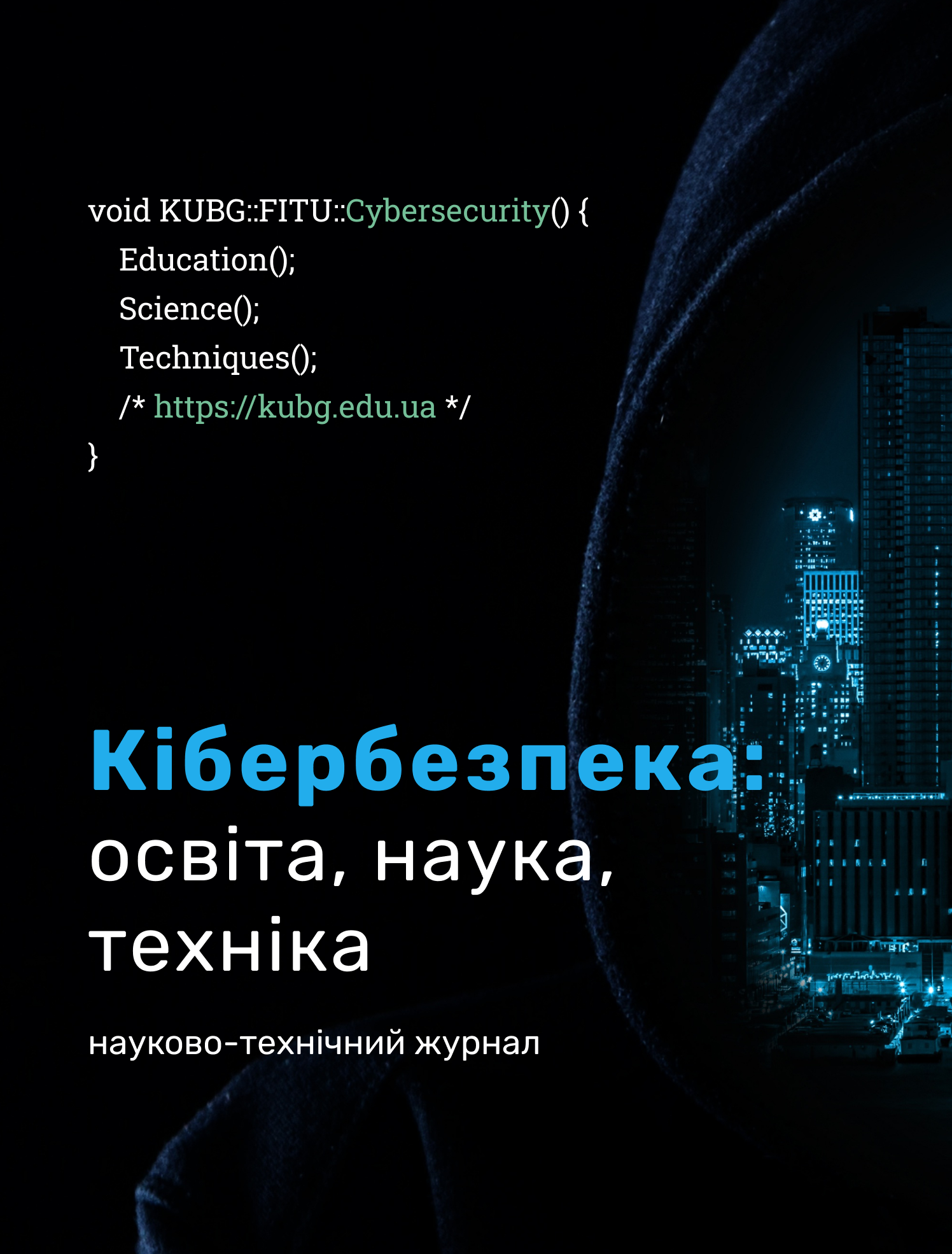МЕТОДИКА РАЦІОНАЛЬНОГО СИНТЕЗУ ПІДСИСТЕМИ КРИПТОГРАФІЧНОГО ЗАХИСТУ ІНФОРМАЦІЇ В МЕРЕЖАХ КРИТИЧНОЇ ІНФРАСТРУКТУРИ
DOI:
https://doi.org/10.28925/2663-4023.2024.24.282297Ключові слова:
криптосистема; складна система; критична інфраструктура; мережа ситуаційних центрів; декомпозиція складної системи; функціональний профіль захищеності.Анотація
У статті розглянуто стан розвитку методології побудови підсистем захисту інформації інформаційних систем об’єктів критичної інфраструктури, окремо виділене питання створення комплексного захисту для складних систем. Відмічено, що складним системам притаманні наявність значної кількості різнорідних елементів, які для досягнення певної мети об’єднані в єдину систему; існування складних, іноді суперечливих зв’язків та впливів; потужні інформаційні потоки між складовими підсистемами. Проведений аналіз характеристик складних інформаційних систем, які негативно впливають на побудову підсистем захисту інформації, визначено актуальність розв’язання завдань створення комплексного захисту для таких систем, особливо в рамках побудови мережі ситуаційних центрів. Зазначено, що вирішенню значної кількості завдань захисту та підвищенню його ефективності сприяє впровадження вдало спроєктованої підсистеми криптографічного захисту інформації (КЗІ), яка може забезпечити надійний захист конфіденційності та цілісності інформації, що обробляється в системі. В рамках визначення умов застосування підсистеми КЗІ в складних системах об’єктив критичної інфраструктури для убезпечення інформації з обмеженим доступом та контролю її цілісності запропоновано методику декомпозиції складних систем одного виду та вдосконалено модель криптографічного захисту в таких системах. Виходячи з необхідності реалізації в рамках процесу вибору певних апаратно-програмних технологічних рішень багаторазової реалізації процедур швидкого порівняння значної кількості якісних (семантичних) та кількісних показників підсистеми захисту інформації на підставі властивостей функціональних профілів запропоновано методику раціонального вибору на основі найбільшого значення функції безпеки засобів придатних для використання в підсистемі.
Завантаження
Посилання
DSTSZI SSS of Ukraine (2005). Procedure for conducting work on the creation of a comprehensive information security system in the information and telecommunications system (ND TZI 3.7-003 -2005)
Grechaninov, V.F. (2018). Network of situational centers of public authorities - the basis for improving the efficiency of their activities (interaction). Mathematical machines and systems, 3, 32–39.
Oksanych, I. M., Grechaninov, V. F., & Lopushansky, A. V. (2020). Information interaction in disparate information systems of situational centers. Mathematical machines and systems, 3, 60–68.
Grechaninov, V., Hulak, E., Hulak, H., Skladannyi, P., & Sokolov, V. (2021). Decentralized Access Demarcation System Construction in Situational Center Network. Cybersecurity Providing in Information and Telecommunication Systems (CPITS-II-2021), Vol. 3188, 197–206.
Grechaninov, V., et al. (2022). Formation of Dependability and Cyber Protection Model in Information Systems of Situational Center. In Workshop on Emerging Technology Trends on the Smart Industry and the Internet of Things, Vol. 3149, 107–117.
Buslenko, N. P. (1968). Modeling of complex systems. Science.
Sharakshan, A. S. (1977). Complex systems: A textbook. Higher school.
Israelov, K.E. (2022). Assessment and prediction of the state of complex objects: application to information security. Issues of cybersecurity, 6(52), 2–19.
Horban, O. M., & Bakhrushin, V. E. (2004). Fundamentals of system theory and system analysis. Study guide. GU “ZIDMU”.
Yang, K., et al. (2023). Complex systems and network science: a survey. Journal of Systems Engineering and Electronics, 34(3), 543–573. https://doi.org/10.23919/JSEE.2023.000080
Jewell, J. (2011). The IEA Model of Short-term Energy Security (MOSES). Primary Energy Sources and Secondary Fuels, IEA.
Nasibov, V., et al. (2018). Models of Electric Power Industry Security Study for Medium-Term Periods. IFAC PapersOnLine, 51(30), 405–409. https://doi.org/10.1016/j.ifacol.2018.11.342
Paulson, D. & Wand, Y. (1992). An Automated Approach to Information-Systems Decomposition. IEEE Transactions on Software Engineering, 3, 174–189. https://doi.org/10.1109/32.126767
Chiriac, N., et al. (2011). Three approaches to complex system decomposition. 13th International DSM Conference, 3–15
Pancerz, K., & Suraj, Z. (2013). A Rough Set Approach to Information Systems Decomposition. Fundamenta Informaticae, 127 (1–4), 257–272.
Buryachok, V. L. (2017). A fast algorithm for generating multi-alphabet substitutions. Information security, 2, 173–177.
Gulak, E. G., & Trofimov, O. C. (2024). Formation of a methodology for the rational selection of encryption tools for use in critical infrastructure networks. Collection of abstracts of the XI All-Ukrainian scientific and practical conference of young scientists Information Technologies, 228–230.
Korchenko, O. G. (2004). Information security systems: Monograph. NAU.
Gulak, G. M., Lakhno, V. A., & Adilzhanova, S. A. (2020). Method of rational management of cyber defense systems and ensuring the reliability of radio engineering systems. Bulletin of NTUU “KPI”. Series Radio engineering. Radio apparatus construction, 83, 62–68.
Department of Special Telecommunication Systems and Information Protection of the Security Service of Ukraine (1999). Criteria for assessing the security of information in computer systems from unauthorized access (ND TZI 2.5-004-99).
CM of Ukraine (2020). On approval of the Technical Regulations of cryptographic information protection means.
Buryachok, V. L. (2011). Method for assessing the effectiveness of cyber weapons to overcome cryptographic information security. Information security of a person, society, state, 1(8), 100–106.
Gulak, G. M. (2018). Evaluation of engineering and cryptographic qualities during case studies of cryptosystems. Abstracts of the 13th International Scientific and Practical Conference “Mathematical and Simulation Modeling of MODS 2018”, 326–330.
Mpekoa, N. (2023). An Analysis of Cybersecurity Architectures. 19th International Conference on Cyber Warfare and Security, 200–207.
Hallman, R., et al. (2020). Return on Cybersecurity Investment in Operational Technology Systems: Quantifying the Value that Cybersecurity Technologies Provide After Integration. 5th International Conference on Complexity, Future Information Systems and Risk. https://doi.org/10.5220/0009416200430052
Hallman, R., et al. (2021) Determining a Return on Investment for Cybersecurity Technologies in Networked Critical Infrastructures. International Journal of Organizational and Collective Intelligence, 11(2), 91–110. https://doi.org/10.4018/IJOCI.2021040105
Alkiviadis, G. A. (1989). Elements of Computer Algebra With Applications 1st Edition. Wiley-Interscience.
Опубліковано
Як цитувати
Номер
Розділ
Ліцензія
Авторське право (c) 2024 Євген Гулак

Ця робота ліцензується відповідно до Creative Commons Attribution-NonCommercial-ShareAlike 4.0 International License.




